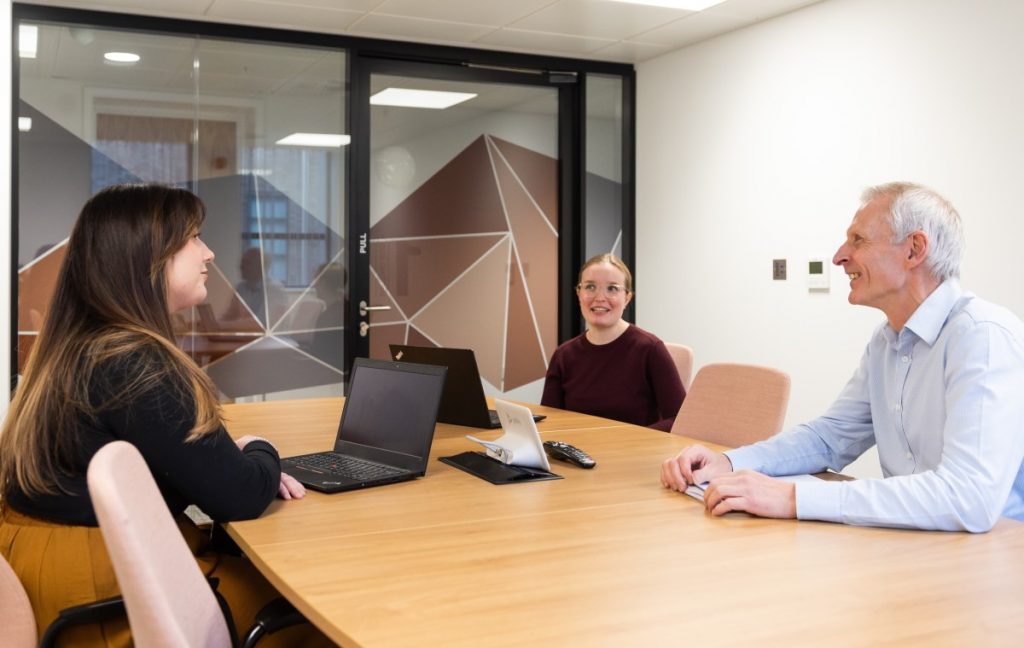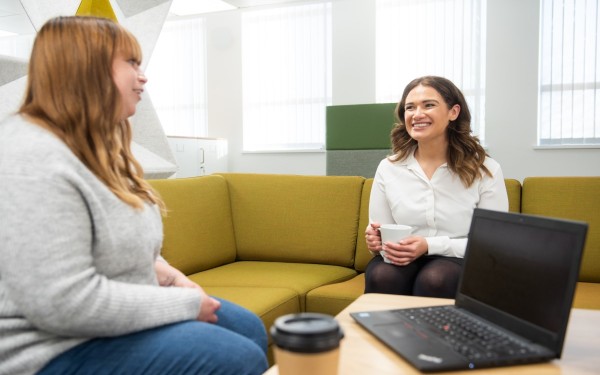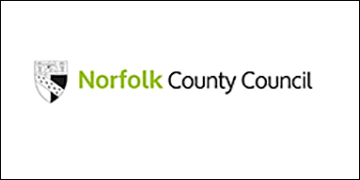In the seven months since Rhiannon started working in one of Norfolk County Council’s family assessment and safeguarding teams (FAST), her knowledge of practice and ability to tackle more complex child safeguarding cases have soared.
She attributes this to a practice support system Norfolk introduced 18 months ago known as the ‘call-in’ or ‘team around the practitioner’ approach.
The system has been developed by Norfolk but draws best practice from Hertfordshire’s family safeguarding model and aspects of Hackney’s reclaiming social work methodology.
Creating a network of excellence
The ‘call-in’ model ensures that case-holding practitioners stay at the centre of the support they give families and children but have access to wraparound assistance from a wide range of specialist practitioners and practical help, as and when required.

Phil Watson, director of children’s social care at Norfolk County Council
Through investment from the council, there are over 125 specialists that work intensively with families. Expertise comes from an in-house service rather than external agencies, so challenges are dealt with quickly, more effectively and without the need to refer on or be put on a waiting list, says Phil Watson, director of children’s social care at Norfolk County Council.
“Increasingly, many of the families we are working with have complex mental health, drug and alcohol misuse issues and referring them out to external services wasn’t always timely and needs were often escalating quickly,” he says.
Wraparound support
Support that can be called in includes intensive and home-based workers, domestic abuse and substance misuse practitioners, functional family therapists, clinical psychologists and child well-being practitioners, harmful sexual behaviour clinicians, youth workers, missing children’s practitioners and much more.
Phil says: “People’s life journeys and children’s needs are never linear. They can escalate and de-escalate, and the flexibility of the call-in model means that practitioners can increase or decrease the level of intervention depending on the family’s need. They can do so without necessarily having to step up, transfer or move cases on. This provides greater continuity of relationship with the allocated case holder.”
What social workers are increasingly seeing is there is a clearer and more helpful demarcation of their role.”
Call-in services also include a variety of practice support roles to ensure social workers are not tied up with paperwork and filling out forms. These include practice co-ordinators, court work facilitators, family time supervisors, and family group conference and family network co-ordinators.
Phil says: “Social workers were finding it difficult to spend enough time building supportive relationships and doing the direct work with children and families that we know makes the difference. This is because they were tied up with admin and complex court work and needed more support and be freed up to do this.”
Collaboration and communication
Rhiannon, a newly qualified social worker in one of Norfolk’s four FAST teams, has seen first-hand what the wraparound support can achieve. She has seen this particularly since the council started piloting joint agency group supervision (JAGS). JAGS brings the range of workers around children and families together to reflect on the impact and effectiveness of their work as a community of practice.
“My skillset is now 10 times greater than when I first started at the council,” says Rhiannon. “I am surrounded by professionals that I can learn from and have found their input crucial when working with families. The JAGS meetings generate action because everyone has a clear plan in place and there is accountability, which means that I don’t have to chase people to get things done.
“I’ve been able to get a lot of my cases turned down to family support because of this and, as a result, we are not seeing the drag that we used to see because we are not holding cases longer than we need to. This approach is helping to alleviate a lot of stress for families because they know that we are not hanging around for longer than we need to.”

© Norfolk County Council
Positive results
In another example, the call-in approach was key to developing the practice of a social worker who was struggling to build a relationship with a teenager. The teenager was on a child in need plan following a report that he had inappropriately touched a child in his family network.
By working with an intensive support worker, the social worker was able to boost her own knowledge of harmful sexual behaviour. This collaborative work gave the social worker the skills to support the teenager and the family to understand his behaviour and what healthy relationships look like, and unpick what led to this behaviour.
Being part of a larger team
According to Phil, examples like these are helping social workers feel part of a larger team.
“What social workers are increasingly seeing is there is a clearer and more helpful demarcation of their role, while seeing themselves as part of a wider multidisciplinary team and not working in isolation,” he says.
“As the safeguarding expert, they are more able to focus on understanding the lived experience of children and families and their life stories, and articulate the risk factors and how they get addressed.”
Since the model was introduced, the council has seen the rates of children coming into care reduce and court applications have decreased by a fifth, says Phil.
“Re-referral rates are also now much lower, and social workers and families report positively about their experience of this way of working. The permanency and stability of our workforce has improved over time,” he says.
“We would have seen a lot more cases escalating and huge demand on our care and child protection systems [without the call-in approach] as is being seen in other areas and nationally, particularly since the pandemic. But we have been able to keep demand and caseloads stable.”
Phil believes this is due to the ring of support the call-in approach offers. Rhiannon agrees and, once she finishes her ASYE period in February 2023, she anticipates a long career in Norfolk.
“I cannot see myself working anywhere else,” she says. “I’ve grown so much, and the council and my team have been a massive part of that. They have built my confidence and helped me to learn a range of skills. The biggest thing is that you are not on your own – there is such a great network around you.”
If you are considering a career at Norfolk County Council, look at their latest jobs.




 Facebook
Facebook X
X LinkedIn
LinkedIn Instagram
Instagram